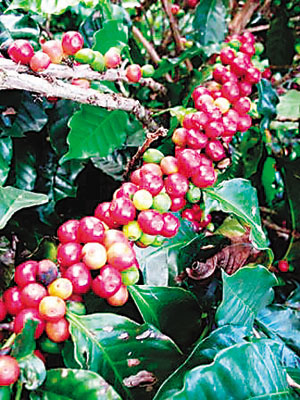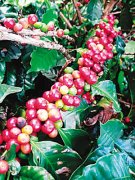Boutique coffee beans from manors in Papua New Guinea
The term "fine coffee" was first put forward by Ms. Knudsen of the United States in Coffee and Tea magazine. At that time, Ms. Knudsen, as a coffee buyer of B.C. Ireland in San Francisco, was very dissatisfied with the neglect of the quality of raw coffee in the industry, and even some big roasters mixed a large amount of Robesda beans in the comprehensive beans, so she put forward the concept of fine coffee to advocate the improvement of the quality of the industry. This term is used to describe coffee beans with distinctive flavor characteristics that grow in a special environment. Its use in international coffee conferences makes it spread rapidly.
Papua New Guinea (Papua New Guinea) aroma 3.5 minutes brightness 3.5 minutes mellow 3.5 minutes flavor 4.5 points aftertaste 4 points
Suitable for baking: City/Full city New Guinea beans can be baked in a wide range, from soft and well-balanced city to full city with a well-balanced flavor, and even re-baking with oil, depending on your preference.
New Guinea is also an anomaly in Indonesian coffee. Coffee estates are numerous, large and small in scale, and most of the small estates produce washed organic beans with strong flavor but no local flavor. These small estates also produce a small amount of sun beans, which are more varied and delicate than water-washed beans; the taste of large manor coffee is more clean and delicate, but some people think that it has less personality. Basically, Babu coffee is lighter than java beans, somewhat similar to good Central American beans. Most of the coffee trees in the area come from the Tibica seed of the Jamaican Arabica bean, mixed with the Arabica bean from Tanzania. There are also some new hybrids or Indian Ken specialties.

Important Notice :
前街咖啡 FrontStreet Coffee has moved to new addredd:
FrontStreet Coffee Address: 315,Donghua East Road,GuangZhou
Tel:020 38364473
- Prev

Characteristics of Tanzania Variety-Kilimanjaro Coffee
Kilimanjaro Coffee-the main coffee producing area of Tanzania is located at the foot of Mount Kilimanjaro, which is rich in volcanic soil, and some coffee trees planted here are over 100 years old. coffee was first introduced by Christians from Kenya to grow coffee. Coffee trees must be carefully taken care of, weeded and fertilized. And the old branches must be cut off so that they can grow again.
- Next

Boutique coffee beans from manors in Papua New Guinea
The term "fine coffee" was first put forward by Ms. Knudsen of the United States in Coffee and Tea magazine. At that time, Ms. Knudsen, as a coffee buyer at B.C. Ireland in San Francisco, was very dissatisfied with the neglect of the quality of raw coffee in the industry, and even some big roasters mixed a large amount of Robesda beans in the comprehensive beans, so she put forward the concept of boutique coffee.
Related
- Does Rose Summer choose Blue, Green or Red? Detailed explanation of Rose Summer Coffee plots and Classification in Panamanian Jade Manor
- What is the difference between the origin, producing area, processing plant, cooperative and manor of coffee beans?
- How fine does the espresso powder fit? how to grind the espresso?
- Sca coffee roasting degree color card coffee roasting degree 8 roasting color values what do you mean?
- The practice of lattes: how to make lattes at home
- Introduction to Indonesian Fine Coffee beans-- Java Coffee producing area of Indonesian Arabica Coffee
- How much will the flavor of light and medium roasted rose summer be expressed? What baking level is rose summer suitable for?
- Introduction to the characteristics of washing, sun-drying or wet-planing coffee commonly used in Mantenin, Indonesia
- Price characteristics of Arabica Coffee Bean Starbucks introduction to Manning Coffee Bean Taste producing area Variety Manor
- What is the authentic Yega flavor? What are the flavor characteristics of the really excellent Yejasuffi coffee beans?

